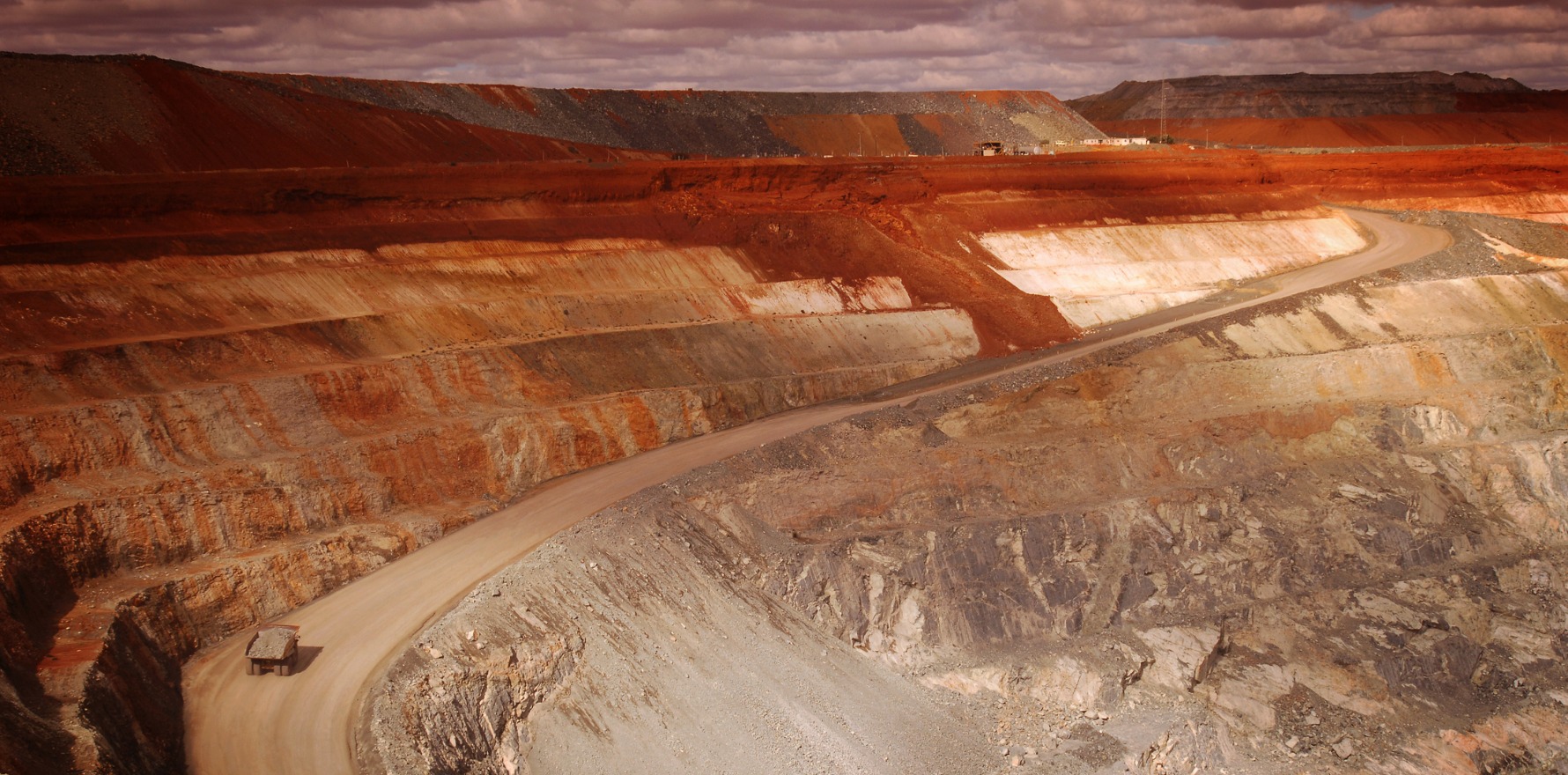We are still being told that environmental destruction has benefits, but the health costs are too high.
In 1975 Dr Bob Brown, motivated by a passion to fight for the environment, stood as a candidate for the United Tasmania Group.
This is widely acknowledged to have been the first Greens party in the world to contest elections, and the origin of the Australian Greens Party (of which he was a co-founder). He later went on to found the Tasmanian Wilderness Society and Bush Heritage Australia.
Almost 50 years later, it is evident that little has changed, and the fight against government and big business to protect the environment and the health of Australians is as pressing as ever. Same issues, different decade.
In my home of the Northern Territory, the issues are innumerable.
Let’s start with fracking. In 2018 the NT government controversially lifted its ban on fracking, to the dismay of both environmentalists and local Aboriginal communities, on the basis that the industry would be made safe through “strict regulation”. (The same kind of strict environmental regulation, one imagines, that led to Glencore reluctantly admitting its McArthur River mine lead-zinc operation as being the source of contaminated cattle and fish, or Glencore spilling tonnes of toxic substances onto roads in the past few years alone, or Glencore being given ongoing approvals for its expansion plans, despite demonstrating multiple failures in its practices.
The fight on fracking in the Beetaloo Basin is perhaps the most-well-known example in the media recently. In June it was announced that a Parliamentary Inquiry would look into fracking in the Basin. Earlier this month, this inquiry heard from Traditional Owners opposed to fracking, who condemned the Morrison government for handing millions of dollars to gas companies while Aboriginal communities continue to experience a lack of basic infrastructure.
Doctors for the Environment Australia have previously raised concerns about the wide array of chemicals used in and released from the fracking process. Some potential chemicals of concern include benzene, polyaromatic hydrocarbons, and heavy metals and technologically enhanced, naturally occurring radioactive materials that may have become concentrated through treatment processes.
Studies examining these chemicals have found that many have not been evaluated, including known carcinogens, and/or have the potential for serious medical harm. Many studies have reported evidence of pathways through which ground and surface water can or previously have been impacted.
This is echoed in a 2016 review by Saunders at al that concluded that, given there is evidence of the developmental and reproductive toxicity of many of the chemicals associated with unconventional natural gas development, with some studies strongly suggesting adverse reproductive outcomes, more research is necessary before proposed fracking developments proceed in the UK.
Mine, all mine
Also this month, the Medical Journal of Australia published a perspective piece on the effects of the Ranger Uranium mine on the health of the local Aboriginal people. It was found that Aboriginal people in the region of the mine, located within Kakadu National Park, experienced rates of stillbirth more than double those of Aboriginal people elsewhere in the Top End, and cancer rates almost 50% higher.
Despite an investigation into this, the report of which was published in November 2020, we still cannot categorically explain why this has occurred. As author Rosalie Schultz noted, the government’s report focused on a biomedical cause-and-effect process and failed to consider the socio-cultural aspect. For instance, economic opportunities associated with the mine did not promote the socio-economic development of the local Aboriginal community, but rather, worsened it through an increase in inequality and deterioration in wellbeing via reliance on royalty income.
Fracking, uranium and other mine sites are in remote areas of the Northern Territory, and often next to Aboriginal communities. This inevitably creates a situation where Aboriginal people lose out, yet again. First Nation populations already experience substantially poorer health than their non-First Nation counterparts, and their voices are given the least weight in the decision-making process for these developments, even though they are the most vulnerable to the potential consequences of these mines.
Western Desert Resources, an iron ore mine in the Gulf of the NT, opened in 2013 with the promise of Indigenous jobs. It went into administration less than a year later, leaving behind a significant hunting and gathering area choked in red iron ore dust. The Redbank copper mine, also in the Gulf and which closed in the 1990s, continues to poison the region’s creeks and waterways to this day.
Defenders of these mines often point to the economic potential of these initiatives, generating jobs and economic independence for Aboriginal people. Curiously, in 2020 the University of South Australia found that less than 10 per cent of mining companies in Australia even have positions on Aboriginal engagement.
The Territory is on the precipice of a cotton boom, predicted to be worth more than $200 million within a decade. The Territory’s first commercial cotton-processing plant is set to be built on Tarwoo Station, 35km north of Katherine. Such plants are known to be environmentally devastating around Australia where they have been established, and NT government studies have already found low levels of agricultural chemicals in aquifers. Furthermore, a large dust storm that blanketed Katherine in 2020 was attributed to nearby land clearing for agricultural development. Local Aboriginal people have voiced their concerns on the effects of this cotton plant on the local river system, and how river death would affect their hunting and gathering, and culture.
Are we clear?
This brings us to land clearing. This year, the NT government proudly announced a land-clearing application process of “enhanced efficiency”, changing the process from six months to a mere six weeks, and allowing lessees to apply to clear up to 1000ha per application of native vegetation for non-irrigated purposes. In 2017 it was revealed that land-clearing approvals in the NT had increased tenfold in the space of only a few years. This involves vast tracts of land being stripped of its native vegetation, trees being burned and re-growth controlled by toxic chemicals.
Land clearing has multiple potential negative health effects, by way of climate destabilisation, disruption of the water cycle affecting water supply and quality, increased risk of air pollution, loss of biodiversity, and loss of opportunities for improved health and wellbeing through contact with nature. Biodiversity is essential for human health because it helps to regular climate, filters air and water, enables soil formation and mitigates the impact of natural disasters.
The psychological impacts of environmental destruction should not be underestimated. To state the obvious, nature is extraordinary; the result of billions of years of evolution, creating untold wonder and biodiversity. Every day, more species within the kingdom classification of plant and animal are discovered. Incredible biological phenomena that have earned their right to be here.
It is surely surprising to no one that immersion in nature has health benefits. Ecotherapy, as it is known, has been found, for instance, to help in mild-to-moderate depression. Exposure to natural environments has been found to have beneficial changes on feelings of energy, anxiety, anger and fatigue. “Nature scripts” are already being prescribed by doctors around the world.
It follows from this, then, that the loss and destruction of nature can have harmful psychological effects. Albrecht coined the term solastalgia, meaning the pain or distress caused by one’s home or land being lost (to deforestation, dam projects and so on). He argues that such changes to one’s environment are perceived as an attack on their sense of place.
By the federal government’s own admission, if current local trends continue, Australia’s natural environment in 2050 will be markedly different from what it is today.
Profits of pillage
We continue to be told that environmental destruction benefits “everyone” through some ill-defined economic trickle-down process, something that has yet to be borne out in the real world. Perhaps most importantly, though, is the fact that transient economic gains could never compensate for long-term health consequences. Or loss of country. Or culture.
The attitude of both industry and government is to do now and superficially seek forgiveness later. This was perfectly demonstrated by Glencore’s apology to the local Aboriginal people for the distress their mine had caused them, while simultaneously pushing to expand it.
These are (some of) the stories of just one state. A state that so overflows with natural beauty, biodiversity and culture it can leave you speechless, and which must be preserved.
Many continue to desperately cling to an Australia of the past, instead of seeking to create an Australia of the future, one where economic stability, good health, and a flourishing and protected environment are not mutually exclusive.
Now, more than ever, we must remember that Bob Brown may have started a movement, but it is up to us to keep it going.
Dr Brooke Ah Shay is a GP in Maningrida in Arnhem Land, NT.



